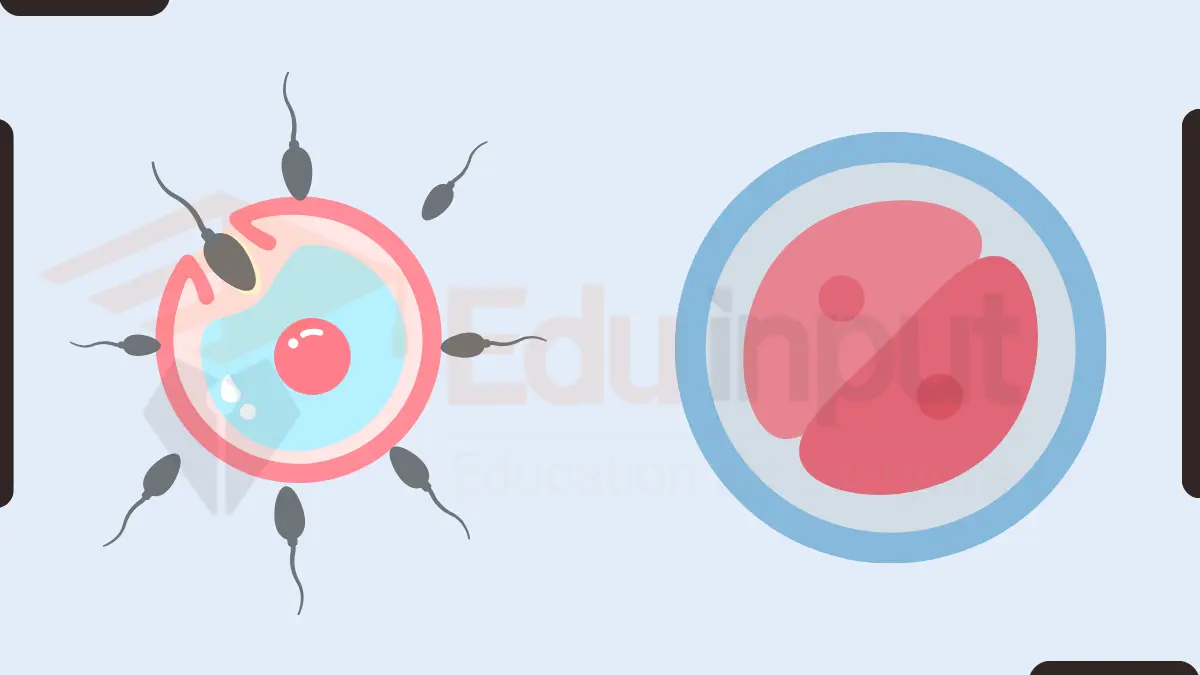Sexual Reproduction | Types Of Reproduction and Fertilization
Sexual reproduction is a biological process, used by living organisms to produce offspring. In sexual reproduction both the parents are involved in gamete formation. Sexual reproduction uses a type of cell division called meiosis, which creates gametes, such as sperm and egg cells.
Reproduction is of two types:
- Sexual Reproduction
- A-Sexual Reproduction

What is sexual reproduction?
Reproduction involves the formation and fusion of gametes in sexual reproduction. It is thought that asexual reproduction is a primitive form of reproduction.
At a later stage, a mechanism has evolved leading to the production and union of gametes. Meiosis and genetic recombination played a major role in the development of more complex forms of life.
What are the two types of Gametes?
There are two types of gametes:
Isogametes:
These are identical gametes.
Heterogametes:
They are motile male gametes (sperms or antherozoid) and non-motile female gametes eggs (ova).
There is a differentiation of sexes (male or female) both in animals and plants. There are two types of organisms:
(a) Unisexual Organism:
These organisms have one sex. They may be male or female. It is an advanced mode of sexual reproduction.
B)Bisexual or Hermaphrodite:
They have both sexes. In plants, bisexuality is generally retained. Despite the bisexuality (tapeworm, earthworm, etc.), cross-fertilization takes place. It maintains the genetic recombination. Fertilization
What is fertilization?
The process in which the fusion of gametes (egg and sperm) takes place is called fertilization.
Types of Fertilization:
There are two types of fertilization:
External fertilization:
It occurs outside the body. The male gametes can swim towards the female gamete in a water medium. So external fertilization occurs in an aquatic environment. Development is also external due to the constant stable conditions of the water. E.g. Frog, fish, etc.
Internal fertilization:
It occurs inside the body of the female. In terrestrial conditions fertilization is internal. Sperms are transferred into the female body where fertilization occurs and development starts. The development may be internal or external.
Types of Animals on Basis of Development:
There are three types of animals based on development:
Oviparous:
In these animals external development takes place. Its examples are reptiles and birds. They lay shelled eggs. This shell protects the developing embryo from harsh terrestrial conditions. Such animals are called oviparous.
Viviparous:
In these animal internal developments takes place. The development of an embryo is completed inside the female body. The female gives birth to a young one. Such animals are called viviparous.
Ovo-viviparous:
In some mammals like duckbill platypus (echidna), internal fertilization takes place and the internal development of the young one in a shelled egg starts. When development is completed, the shelled egg is laid. The egg is hatched and offspring come out. This is called ovoviviparous condition.
Viviparous and ovoviviparous animals provide more protection to their young one during development. Nourishment is provided through stored food in the egg or through the placenta by the mother.

 written by
written by 




Leave a Reply